Bangkok National Museum
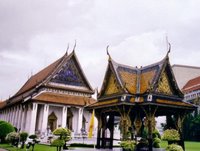 The history of the National Museum Bangkok dates back to 1874 when His Majesty, King Rama V opened the first public "museum" to exhibit the royal collection of King Rama IV, and other objects of general interest, at the Concordia Pavilion inside the Brand Palace. Later, the Museum was transferred to its present site, the "Wang Na", or "Palace to the Front" which had been the palace of the Prince Successor. In 1926, it was named the "Bangkok Museum" and subsequently developed into the National Museum Bangkok, when it came under the direction of the Department of Fine Arts in 1934.
The history of the National Museum Bangkok dates back to 1874 when His Majesty, King Rama V opened the first public "museum" to exhibit the royal collection of King Rama IV, and other objects of general interest, at the Concordia Pavilion inside the Brand Palace. Later, the Museum was transferred to its present site, the "Wang Na", or "Palace to the Front" which had been the palace of the Prince Successor. In 1926, it was named the "Bangkok Museum" and subsequently developed into the National Museum Bangkok, when it came under the direction of the Department of Fine Arts in 1934.
His Majesty the King Presided over the opening ceremony of the South Wing Buiding (The Mahasurasinghanat Building) and the North Wing Building (The Praphatphiphitaphan Building) on 25 May,1967
The Exhibition Galleries in The National Musenm Bangkok
The National Museum Bangkok currently houses three permanent exhibition galleries:1. The Thai History Gallery located in the front of the Siwamokhaphiman Hall, a ceremonial building.
2. The Archaeological and Art History Collections which are divided in two parts:
(i) The Prehistory Gallery, located in the back of the Siwanmokhaphiman Hall, and Gallery No. S6 on the upper floor of the South Wing Building.
(ii) The Art History Gallery, located in the North Wing Building, which displays sculptures and exhibits from the Dvaravati, Srivijaya and Lopburi periods, (before 1257 AD) up to the Bangkok period (1782)
3. The Decorative Arts and Ethnological Collection which is displayed in the old central palace buildings. This collection contains a variety of artistic, cultural and ethnographic exhibits such as gold treasures and precious stones, mother of pearl inlay, royal emblems and insignia, costumes and textiles, ceramics, carved ivory, old royal transportation, old weapons and musical instruments.
Other exhibits of interest in the Museum grounds include:
The Royal Funeral Chairots built for Royal cremation ceremonies,
The Buddhaisawan Chapel, housing the Phra Buddhasihing, an important
sacred Buddha image. The paintings inside this chapel are the oldest murals in Bangkok.
Issares Rajanusorn, a restored private residence of King Pinklao, King Rama IV's brother.
The Red House, originally one of the private living quarters of Queen Sri Suriyen, wife of King Rama II.
The National Museum Bangkok Address
Na Phrthat Rdm Phra Borommaharachawang Sub-district,Phra Nakorn District, Bangkok 10200
Located between Thammasat University and The National Theatre,opposit Grand Park (Sanamluang)
Telephone
Museum Education Section Tel.662-224-1333 Fax. 662-224-1404Curatorail Staff Section Tel 662-224-1402
How to go
By Bus No. 3, 6, 9, 15, 19, 30, 32, 33, 43, 53, 59, 64, 65, 70, 80, 84Air Condition bus No. 3, 6, 7, 38, 39, 80, 82, 91
Airport Bus No A2.
The Attractions surround Bangkok National Museum
- The National Gellery- Wat Pho Temple and Massage
- Wat Phra Kaeo
Get more information about Thailand Museum Read More...
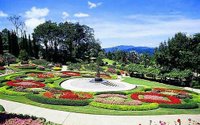 Chiang Rai, which was founded in 1262 by King Meng Rai,
Chiang Rai, which was founded in 1262 by King Meng Rai,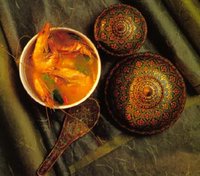 Thai food, like Thai culture, is the product of various influences, blended to form one distinctive cuisine. Ordinary fare in Sukhothai and early
Thai food, like Thai culture, is the product of various influences, blended to form one distinctive cuisine. Ordinary fare in Sukhothai and early 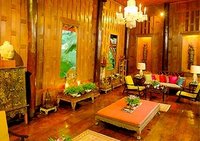 Wellcome to Jim Thompson House at Bangkok, Thailand, Jim Thompson House is ancient Thai House. After leaving the service, he decided to return and live in Thailand permanently.The hand weaving of silk, a long neglected cottage industry, captured Jim Thompson's attention, and he devoted himself to reviving the craft. Highly gifted as a designer and textile colorist, he Stairwaycontributed substantially to the industry's growth and to the worldwide recognition accorded to Thai silk.
Wellcome to Jim Thompson House at Bangkok, Thailand, Jim Thompson House is ancient Thai House. After leaving the service, he decided to return and live in Thailand permanently.The hand weaving of silk, a long neglected cottage industry, captured Jim Thompson's attention, and he devoted himself to reviving the craft. Highly gifted as a designer and textile colorist, he Stairwaycontributed substantially to the industry's growth and to the worldwide recognition accorded to Thai silk.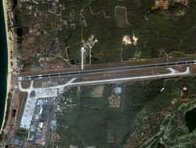
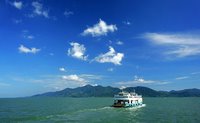 The season is from October to May as from mid May to mid October most of the resorts are closed, but visitors will still be able to find a few open, as some of the owners actually live there and are open all year round.
The season is from October to May as from mid May to mid October most of the resorts are closed, but visitors will still be able to find a few open, as some of the owners actually live there and are open all year round.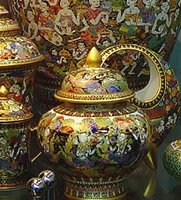 Visitors at the Third OTOP City; OPOT or One Tampon One Product, being held from December 17-25 at the IMPACT Trade and Exhibition Centre in Muang Thong Thani, Nonthaburi Province, Thailand, on the outskirts of Bangkok are recommended cheap and high quality products produced by local residents in Thailand's southern region and by persons with disabilities (PWDs).
Visitors at the Third OTOP City; OPOT or One Tampon One Product, being held from December 17-25 at the IMPACT Trade and Exhibition Centre in Muang Thong Thani, Nonthaburi Province, Thailand, on the outskirts of Bangkok are recommended cheap and high quality products produced by local residents in Thailand's southern region and by persons with disabilities (PWDs).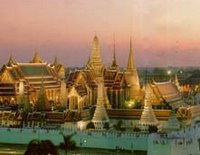 Bangkok or Krung Thep was established as the capital of Thailand 223 years ago by King Rama I in 1782. Bangkok is located at the central part of
Bangkok or Krung Thep was established as the capital of Thailand 223 years ago by King Rama I in 1782. Bangkok is located at the central part of  Today hotels and resorts have
Today hotels and resorts have 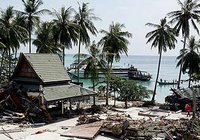 "Overseas architecture firms from 49 countries are in the running for the tsunami memorial design competition, but the winner must work with local partners, according to Jedkamchorn Phromyothi, an executive member of the Council of Architects,
"Overseas architecture firms from 49 countries are in the running for the tsunami memorial design competition, but the winner must work with local partners, according to Jedkamchorn Phromyothi, an executive member of the Council of Architects, 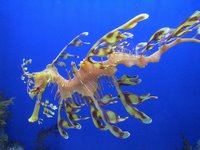 Siam Ocean World is news Aquarium in Bangkok; other Aquarium in Thailand such as
Siam Ocean World is news Aquarium in Bangkok; other Aquarium in Thailand such as 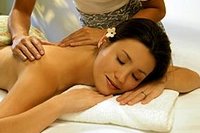 Now Spa business grows in high rate in USA, Europe, Asia and also Thailand which is called “
Now Spa business grows in high rate in USA, Europe, Asia and also Thailand which is called “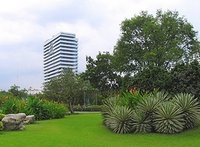 Lumpini Park or Suan Lum is the name of Park but when called
Lumpini Park or Suan Lum is the name of Park but when called